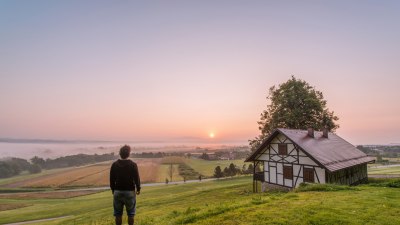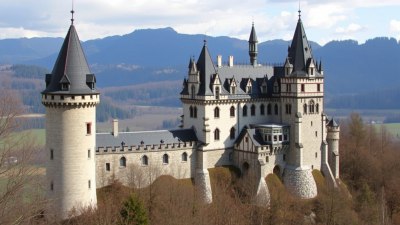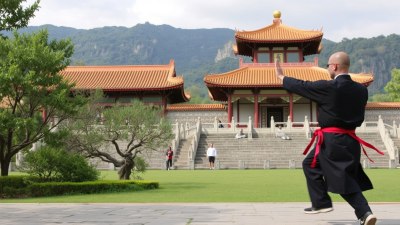Why This Tiny Country Has More Castles Than Any Other on Earth
Discover why this small nation boasts more castles than any other in the world. Explore its rich history and unique architecture.

Image by aleskrivec on Freepik
When it comes to castles, one of the most intriguing phenomena on the planet is the sheer number concentrated within the borders of a tiny country known as Luxembourg. With a population of roughly 634,000 and an area of just 2,586 square kilometers, Luxembourg holds the record for having the most castles per capita. This delightful aspect of Luxembourg's cultural heritage prompts curiosity: why does this small nation have more castles than any other on Earth? In this article, we will delve into the historical, geographical, and social factors that contribute to this unique feature of Luxembourg.
A Brief Overview of Castle Culture
Throughout history, castles have served various functions: as fortifications, residences for nobility, or symbols of power. They represent not only architectural achievements but also reflect the social and political dynamics of their times. Castles were built across Europe primarily during the Middle Ages, and as political structures evolved, many of these impressive buildings became essential components of the cultural landscape, shaping the identity of nations.
The Geography of Luxembourg
Luxembourg might be small, but its lands are characterized by hills, rivers, and forests. The geography significantly influenced its architectural developments, resulting in a wealth of striking castles. The natural landscape provided various strategic locations where castles could be effectively defended against intruders. Each of Luxembourg's castles was designed to respect its terrain, utilizing the elevation and natural visual barriers to enhance their defensive capabilities. This geographic advantage allowed for the establishment of numerous castles throughout the centuries.
Historical Significance
The history of Luxembourg is marked by constant power struggles and shifting allegiances, leading to the establishment of numerous dynasties and noble families. As a significant center of power in the region during the feudal era, Luxembourg’s nobility constructed castles to fortify their defenses and demonstrate their wealth. These structures served as administrative centers, from which lords could maintain control over their territories, collect taxes, and exert influence. The wealth derived from agriculture, trade, and mining further enabled these noble families to build lavish castles, contributing to the vast number present today.
The Role of the House of Luxembourg
The prominent House of Luxembourg played a pivotal role in shaping the country’s castle landscape. Rising to prominence during the 10th century, the family contributed to Luxembourg's political and territorial expansion. Several castles in Luxembourg were established or renovated by members of this influential house, including the notable Bock Casemates, a UNESCO World Heritage site, which exemplifies the architectural innovation of the era. The legacy of the House of Luxembourg is evident throughout the nation, as many castles are intricately linked to this powerful dynasty.
Architectural Diversities
Luxembourg's castle architecture is incredibly varied, reflecting the different styles and periods in which they were built. You can find Romanesque, Gothic, and Renaissance elements throughout the various structures, each representing a different aspect of European architectural evolution. For instance, Vianden Castle, perched above the River Our, showcases a blend of Romanesque and Gothic styles. The combination of these influences not only makes the castles aesthetically pleasing but also narrates the story of Luxembourg's evolving architectural techniques over centuries.
Cultural Heritage Preservation
Today, Luxembourg takes significant pride in preserving its cultural heritage, with many castles being restored and converted into museums or open spaces for the public. This commitment to maintaining the rich history associated with these structures reflects the nation's understanding of its past and the importance of these places in shaping its identity. Exploring these castles offers insight into the lives of those who once inhabited them and the historical events that unfolded within their walls.
Tourism and Economic Impact
The impressive number of castles in Luxembourg has a considerable impact on tourism, drawing visitors from across the globe. Travelers interested in history and architecture often find themselves embarking on a journey through time, exploring the beautifully preserved structures that tell the tales of Luxembourg's past. As a result, the tourism sector contributes significantly to the nation’s economy. In fact, a well-structured tourism plan that highlights these attractions leads to increased awareness, investment, and job creation, fostering economic growth for the tiny nation.
The Commemorative and Symbolic Role of Castles
Beyond their historical significance, castles in Luxembourg hold profound symbolic value for the nation. They represent the resilience of the Luxembourg people, serving as a reminder of the struggles endured throughout history and the victories achieved against adversities. For many citizens, these castles embody national pride, connecting them to their heritage and allowing them to celebrate their unique identity.
Modern-Day Relevance
In contemporary times, castles remain central to Luxembourg's cultural narrative. The country frequently hosts various events and activities within these historical sites, from medieval fairs to concerts and art exhibitions. This active engagement not only emphasizes the continued relevance of these structures but also reinforces the community bond and fosters a sense of belonging among the people. Visitors can witness firsthand how the castles continue to evolve and adapt, mirroring the dynamic nature of Luxembourg’s identity.
Castles as Educational Platforms
Luxembourg's castles are more than just physical structures; they serve as educational platforms that offer insights into the country’s historical trajectory. Many castles host guided tours and workshops that provide visitors with a deeper understanding of the feudal systems, architectural evolution, and cultural practices that defined different periods in Luxembourg's history. These educational initiatives foster appreciation among younger generations, ensuring that the rich tapestry of Luxembourg's past is not lost to time.
The Future of Castles in Luxembourg
Looking ahead, the future of Luxembourg's castles appears bright. With ongoing restoration efforts and enhanced tourism strategies, these historical sites are set to remain integral to the nation’s identity. This commitment to preservation not only safeguards the rich heritage but also allows for continued exploration and engagement for future generations. The small nation stands as a testament to the idea that even with limited geographical boundaries, a country can flourish in culture, history, and architectural splendor.
In conclusion, Luxembourg holds a distinctive place in the landscape of global castles. The convergence of historical significance, geographical advantages, and collective pride all contribute to this small nation boasting the most castles per capita in the world. Each castle tells its own story, intricately woven into the fabric of Luxembourg’s identity. Through preservation efforts and a focus on fostering tourism, Luxembourg is not just a small country; it is a colossal entity of history. For travelers and citizens alike, the castles serve as enduring symbols of cultural heritage and remind us of the remarkable chronicles that shape societies.











